Article from BTNews 19 SEPTEMBER 2022
ON TOUR EXTRA: Around the British Isles
Ambience is the lead ship for a new British cruise line Ambassador, best described as an up-market reincarnation of CMV, one of the first holiday company casualties of Covid-19 in July 2020. 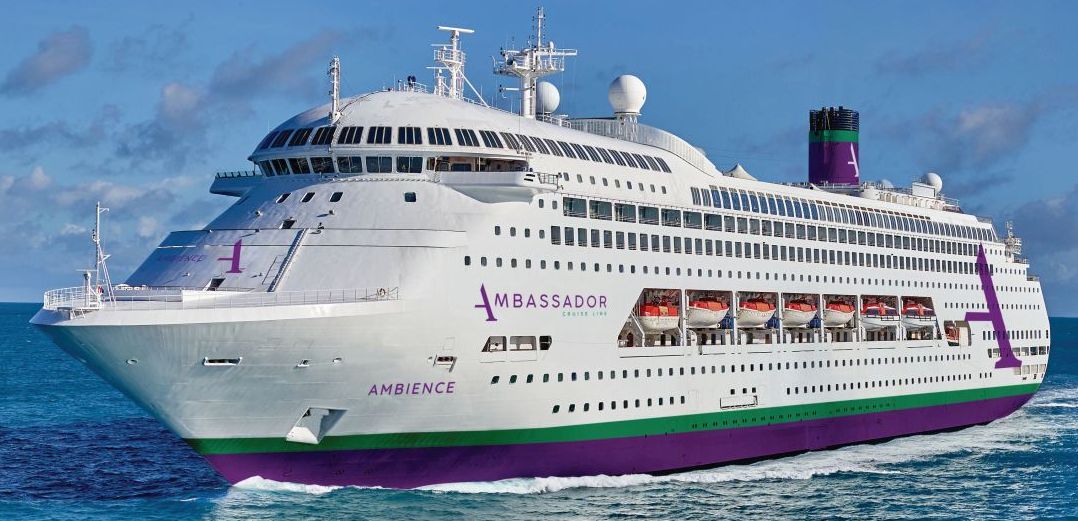
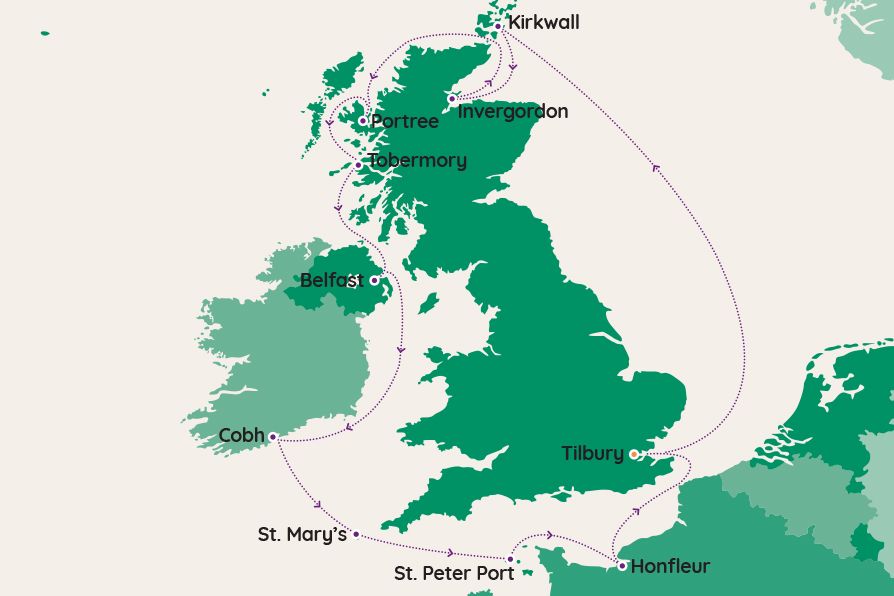
BTN outlined the background to Ambassador with a feature in May 2021. Aimed at the over 50s it offers ‘value for money’ and made its maiden voyage, a three-night trip to Hamburg, on 20 April 2022.
On 1 September Malcolm Ginsberg (and wife Linda) caught up with the ship at her home port of Tilbury for a ten-night cruise named ‘British Isles Discovery’.
Whilst in many ways a re-creation of a previous trip on CMV Magellan (See www.btnews.co.uk/article/10593), it offered a chance to take a look at destinations time did not allow for in 2016.
Here are his words:
"For the most part we took the official tours, good value and well supported, and a guarantee of getting back on the ship before it departed. At Duart Castle, from Tobermory, Isle of Mull, we were 45 minutes late!
Day one was spent at sea off the east coast of England and Scotland, an opportunity to get to know the ship and be briefed on the trip.
Kirkwall, Orkney Isles 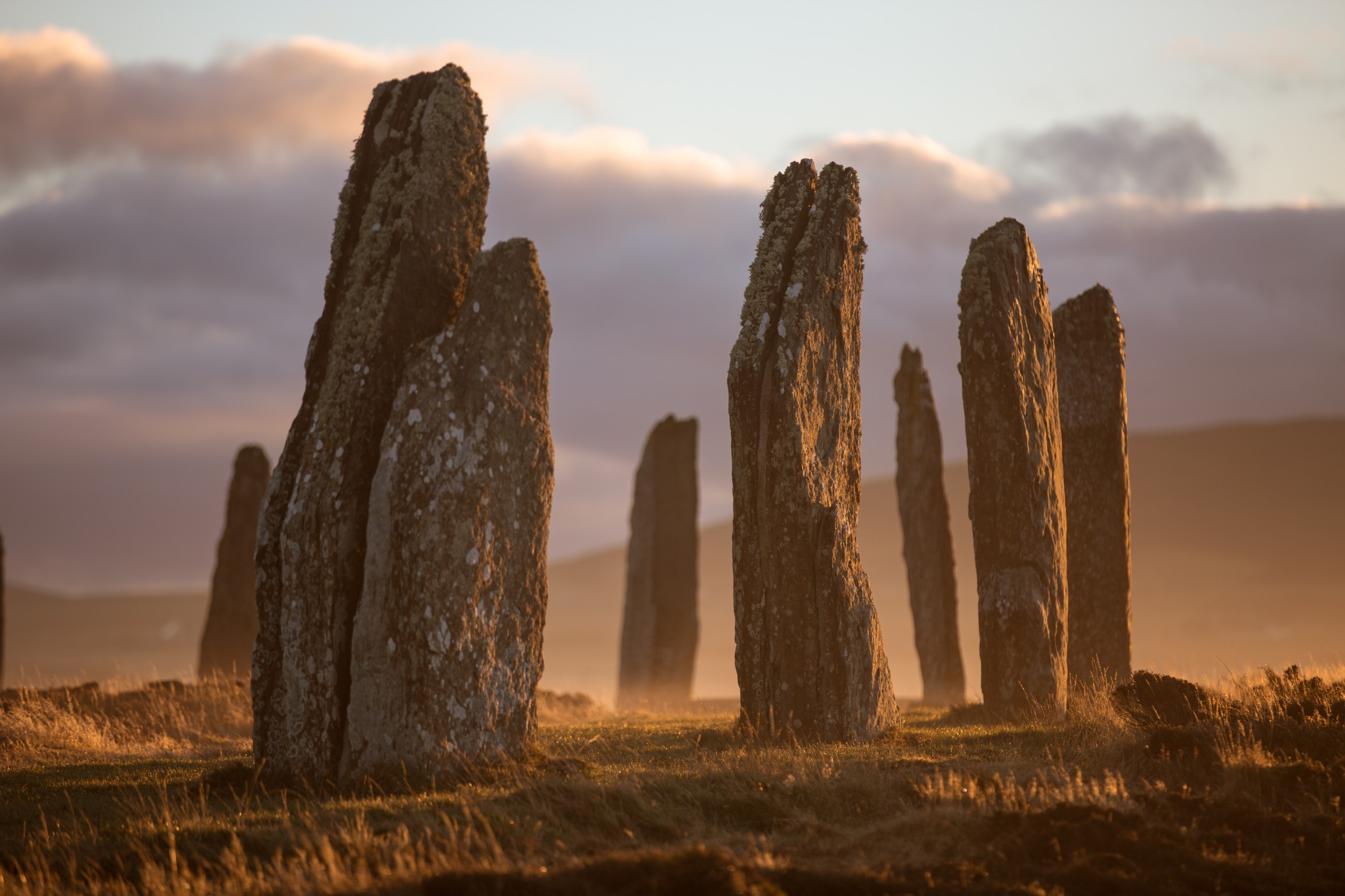 The administrative centre of the Orkney Isles, Kirkwall is a small municipality, that welcomes cruise ships with a free shuttle to the tourist centre. St Magnus Cathedral dominates the skyline sitting at the end of Albert Street, the busy shopping area.
The administrative centre of the Orkney Isles, Kirkwall is a small municipality, that welcomes cruise ships with a free shuttle to the tourist centre. St Magnus Cathedral dominates the skyline sitting at the end of Albert Street, the busy shopping area.
We took what was called ‘A Scenic Tour of Orkney’, four hours plus allowing plenty of time to follow up with a bus into the town.
First up is the former Royal Navy base at Scapa Flow during WWI and WWII. Most famously, the German fleet of 74 ships were interned there in November 1918 with 52 scuttled in 1919 to prevent them falling into British hands. On 14 October 1939, RMS Royal Oak was anchored at Scapa Flow in Orkney when she was torpedoed by the German submarine U-47 commandeered by Günther Prien. Of Royal Oak's complement of 1,234 men and boys, 835 were killed that night or died later of their wounds. A buoy marks the war grave of the upturned hull.
At Lyness on the island of Hoy there is the brand-new Scapa Flow Museum, but currently it is impractical to visit on a cruise visit by ferry from Kirkwall.
We then headed inland towards the heart of Neolithic Orkney, which was designated a World Heritage Site by UNESCO in 1999. We drove slowly past the imposing Standing Stones of Stenness, the remains of one of the earliest stone circles in Britain and on to the sandy beach at Birsay Bay for a photo stop and the wild and spectacular 91m (300ft) high cliffs at Marwick Head, home to thousands of seabirds.
A final stop on an interesting morning was the Ring of Brodgar, a Neolithic age stone circle. This UNESCO World Heritage Site is famous for its 27 remaining standing stones. This site dates back to 2,500 to 2,000BC and was originally 104m (341ft) wide and contained 60 megaliths, thought to be used as a religious shrine and for ceremonial rituals. It predates Stonehenge.
www.orkney.com
Invergordon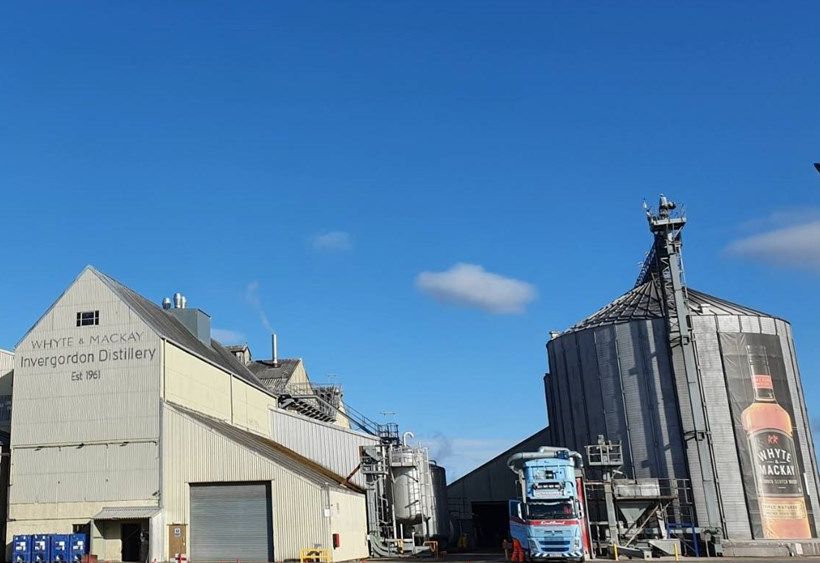 It is best to describe Invergordon as the gateway to Inverness, the capital of the Highlands which still retains its market town feel with its Victorian market, great variety of shops, and restaurants and bars. It straddles the River Ness. Nearby is the bleak site of the Culloden battlefield where the Highland Jacobean cause came to a bloody end.
It is best to describe Invergordon as the gateway to Inverness, the capital of the Highlands which still retains its market town feel with its Victorian market, great variety of shops, and restaurants and bars. It straddles the River Ness. Nearby is the bleak site of the Culloden battlefield where the Highland Jacobean cause came to a bloody end.
From Invergordon access is also easy for Dunrobin Castle home of the Duke of Sutherland (and I was privileged to be taken by his Lordship on a private tour many years ago) and also Loch Ness for monster searchers. Urquhart Castle, a ruin, sits on its banks and offers tremendous views.
Ambassador also offered a walking tour termed Rogie Falls lasting over one hour including terrain which can be wet, muddy and slippery. Here visitors were able to see magnificent falls from the Silverbridge suspension bridge. There was wildlife in abundance including pine marten, red squirrel and wildcat.
http://www.visitinvergordon.com
Portree, Isle of Skye 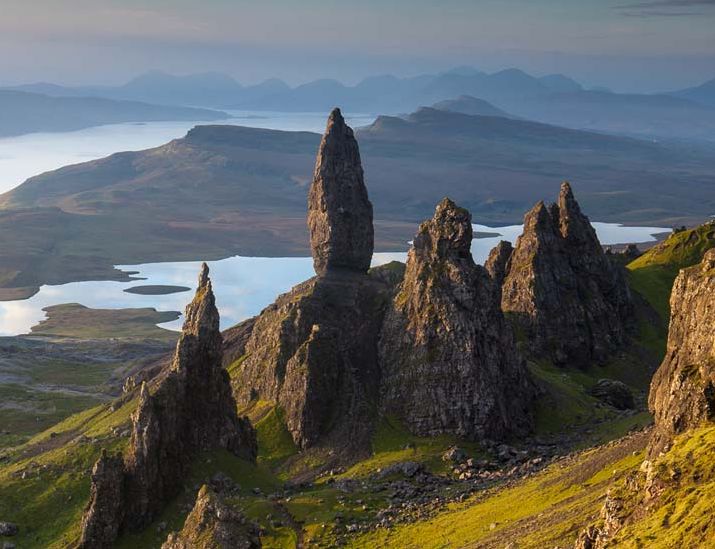 The Isle of Skye will forever be connected with ‘Bonnie’ Prince Charlie and his rescue by Flora MacDonald following the failure of the Jacobite rebellion in 1745. Today it is connected to the mainland by a bridge completed in 1995. With an area of 640sq miles and a population of around 10,000 it is the largest island in the Inner Hebrides.
The Isle of Skye will forever be connected with ‘Bonnie’ Prince Charlie and his rescue by Flora MacDonald following the failure of the Jacobite rebellion in 1745. Today it is connected to the mainland by a bridge completed in 1995. With an area of 640sq miles and a population of around 10,000 it is the largest island in the Inner Hebrides.
This was a tender port, the transfer well-organised with tour groups gaining priority.
Best described as a leisurely scenic circular 2hr 30min tour on a fine day it took in some narrow roads with fascinating views of the coastline and undulating stretches of moorland heather with streams and lochs. The highway rises and falls, twists and turns as it follows the geographical contours of the eastern coastline passing through small communities and agricultural hamlets with cattle and sheep grazing contentedly against a backdrop of distant peaks. We stopped at the ‘Old Man of Storr’, a large pinnacle of rock that stands on the highest point on the Trotternish Ridge composed of ancient lava flows. At the top of the island we got out at Kilt Rock, a 90m (295ft) rock cliff named for its striking similarity to a pleated kilt. Adjoining it are the ‘Mealt Falls’, which fall dramatically 55m (180ft) from the clifftop into the sea.
The route back on the western side was via the little port of Uig, and twin track road with no problems in making the ship on time.
The island is much larger than one would think and our trip covered about a quarter. To put it in perspective Skye is 250 miles of less than brilliant roads from Glasgow and over 600 miles from London.
www.isleofskye.com
Tobermory, Isle of Mull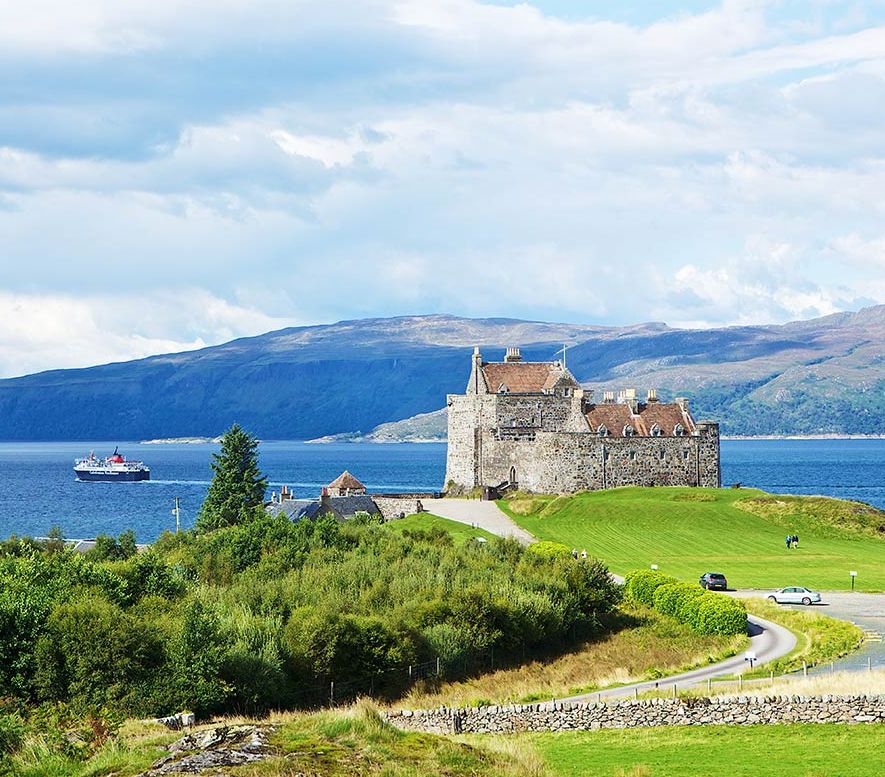 Balamory was a BBC children’s programme which ran between 2002 and 2005 about a fictional small island community. It was filmed at Tobermory, capital of the Isle of Mull and is famous for its brightly coloured houses along the waterfront.
Balamory was a BBC children’s programme which ran between 2002 and 2005 about a fictional small island community. It was filmed at Tobermory, capital of the Isle of Mull and is famous for its brightly coloured houses along the waterfront.
Passing through Craignure the main ferry port to the island on a highway that was never completed as a dual-lane road but has passing places. This can slow travel down hence our late return to the ship.
Our destination was Duart Castle, for over 700 years the home of the Clan Maclean. The very active present Chief is Sir Lachlan Hector Charles Maclean (born 1942) the 28th Chief of Clan Maclean. His late father, Sir Charles Maclean, was Chief Scout from 1959 until 1975.
The Castle sits on a rocky knoll overlooking the Sound of Mull and the Scottish mainland. It was likely built by the Clan MacDougall in the 13th century and then came into the hands of the Clan Maclean in the following century. The original keep was built by Chief Lachlan Lubanach but what you see is the remarkable restoration by Sir Fitzroy Maclean completed in 1911. The castle was a total ruin from the 18th century. Proud of his work Sir Fitzroy said at the opening that he had completed something his unborn grandchildren could see after his passing. He died in 1936 aged 101.
During our visit we saw the principal parts of the Castle including the staterooms and walked through the dungeons. A popular film location the castle was used for the 1996 Sean Connery and Catherine Zeta Jones movie ‘Entrapment’, and the young (Sir) Anthony Hopkins 1971 classic ‘Eight Bells Toll’ developed from Alistair MacLean's book. A Scottish Gaelic speaker and member of the clan, probably his most famous work was 'The Guns of Navarone'.
https://visitmullandiona.co.uk
Belfast 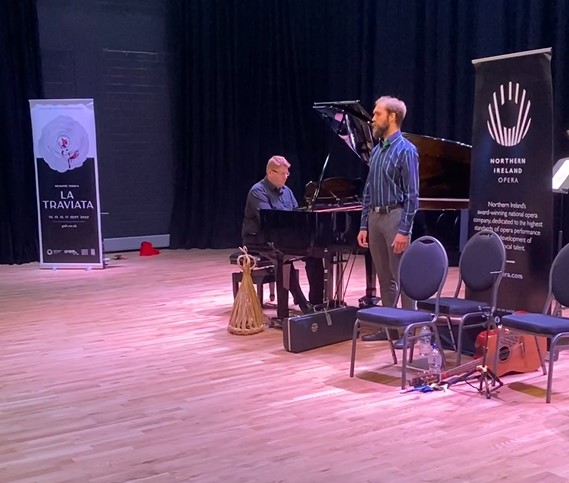 The city of Belfast has a well-organised small cruise terminal and a regular courtesy bus shuttle to the Tourist Information Bureau opposite the impressive City Hall in Donegall Square.
The city of Belfast has a well-organised small cruise terminal and a regular courtesy bus shuttle to the Tourist Information Bureau opposite the impressive City Hall in Donegall Square.
Close by is the Grand Opera House, where we were able to take in a free relaxing lunchtime recital by Fionn Ó hAlmhain in The Studio. He sang in German and Gaelic, quite a mixture.
Completed in 1906 City Hall is the civic headquarters of Belfast City Council and is open to the public daily. The City Hall in Durban (South Africa) built in 2010 is almost an exact replica and it is obvious where The Port of Liverpool Building of 1913 gained its inspiration.
City Hall is a multi-purpose venue hosting a large number of events in its large function rooms or outdoors on the beautiful lawns. Free daily tours of the building allow visitors to admire the superb art collection, formal rooms such as the Council Chamber and Great Hall, while its opulent interiors are lit by a stunning collection of stained-glass windows.
A 16-room visitor exhibition explores the history of the city through themed and interactive displays from the earliest times to the present. It is absolutely fascinating and manages deftly the disparity between the Unionist and Republican communities.
The famous sons and daughters of Belfast are highlighted, including George Best, footballer; Mary McAleese, a former President of Ireland; Van Morrison, music man; Dame Mary Peters, Olympic athlete; and Chaim Hertzog, who served in the British Army in WWII and became the sixth President of Israel. His son Isaac is the 11th President.
The City Hall grounds are the primary green space in Belfast City Centre and hosts continental markets and open-air concerts.
The grounds feature a number of statues and memorials relating to Belfast’s leading figures and historic past, including the Titanic Memorial Garden.
See also BTN ON TOUR 14 June 2021 and a earlier visit BTN ON TOUR 15 June 2009.
https://visitbelfast.com
Cobh, for Cork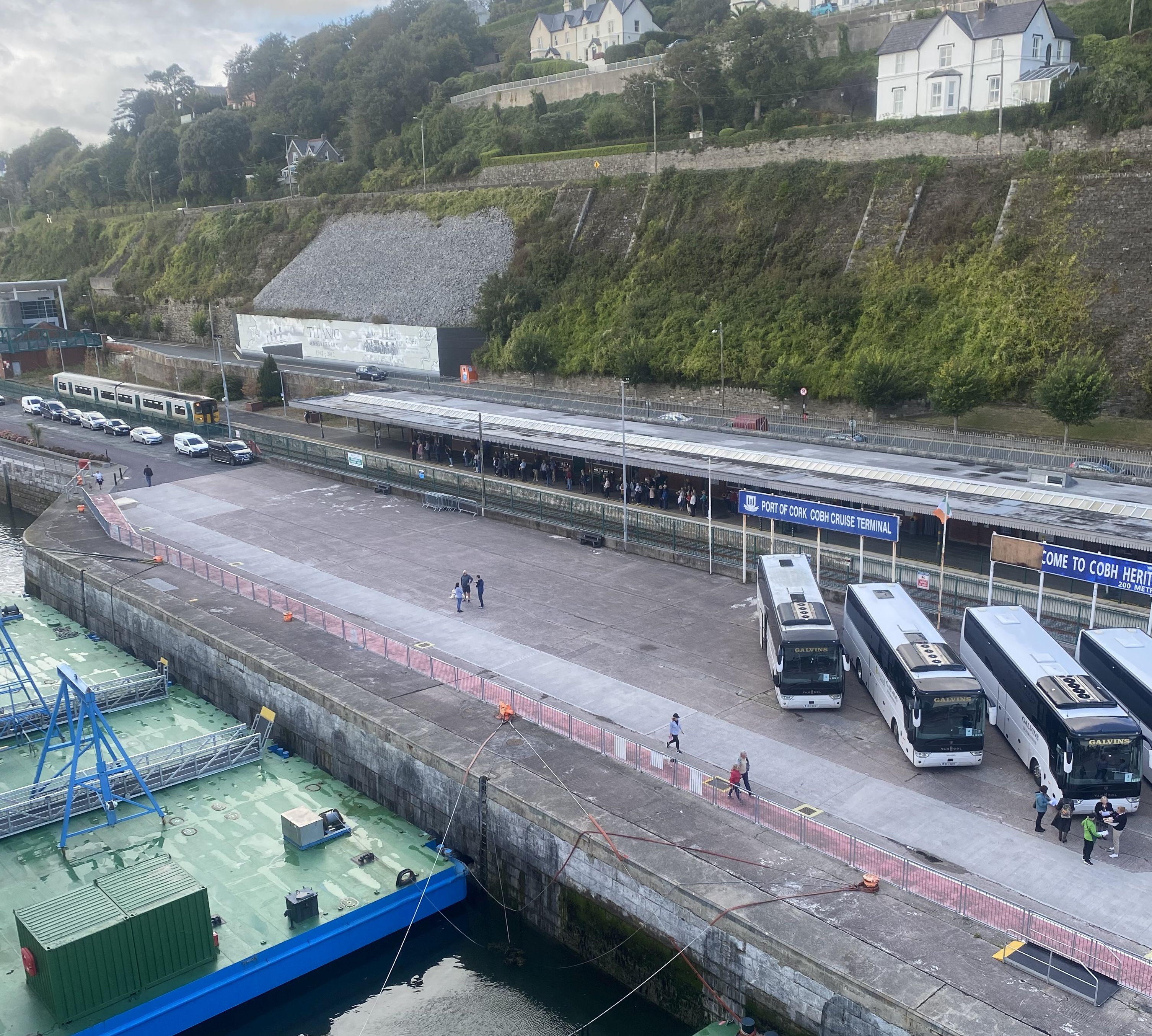 Pronounced 'Cove' and called Queenstown between 1849 and 1920, Cobh is famous as the last port of call by Titanic before it started its ill-fated journey across the North Atlantic on 12 April 1912.
Pronounced 'Cove' and called Queenstown between 1849 and 1920, Cobh is famous as the last port of call by Titanic before it started its ill-fated journey across the North Atlantic on 12 April 1912.
Whilst 1,500 passengers were lost with Titanic there were 1,198 fatalities with the U-boat sinking of the Cunarder Lusitania in May 2015, a major contributing factor to the United States entering the war. What was the original station adjoining the jetty has now been turned into a fine museum as the Cobh Heritage Centre, which during the period of mass immigration to the United States saw up to three million people pass through.
Also, just as you come down the gangway is the actual Cobh railway station with a train every 30 minutes to Cork Kent station from which there are trains to Dublin. Whilst the rail operator takes ‘plastic’ time has not caught up with the local bus company, operating in Euros only. A kindly driver looked the other way for the five-minute drive into the centre of Ireland’s second city.
If you fancy the tradition of kissing the Blarney Stone, Ambassador offer an excursion.
www.visitcobh.com
St Mary's, Isles of Scilly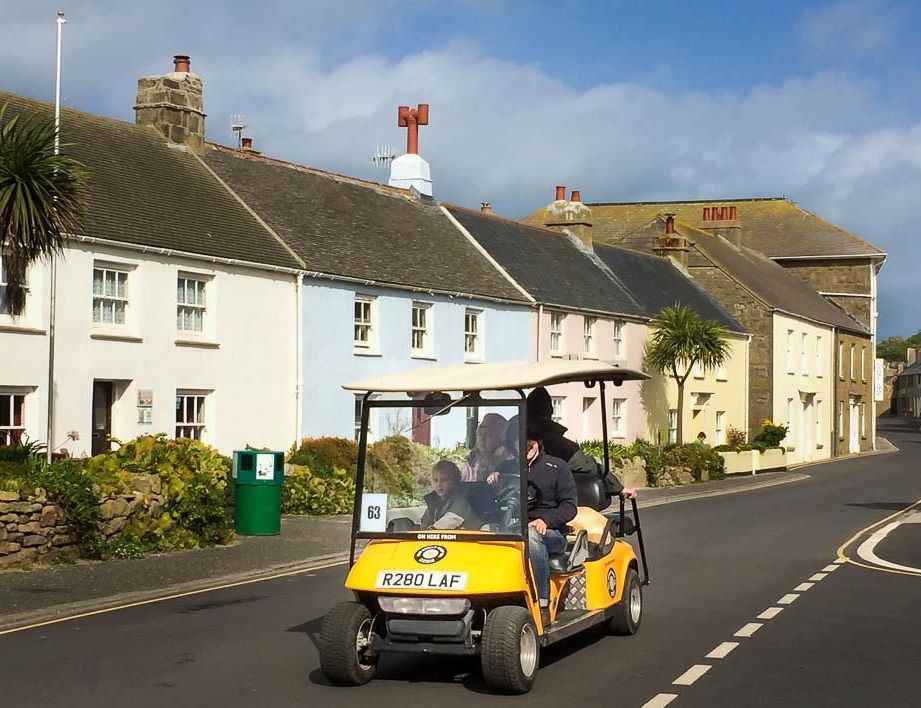 Having been a regular visitor to the Isles of Scilly over the years it was a question of “what to do”, the last trip being in December 2021 (See www.btnews.co.uk/article/18488). With the ship moored well offshore, due to tides and sea conditions, we thought about visiting Bryher (not practical due to limited services) and St Martin (too risky for timings via St Mary’s on the ship’s official transfer).
Having been a regular visitor to the Isles of Scilly over the years it was a question of “what to do”, the last trip being in December 2021 (See www.btnews.co.uk/article/18488). With the ship moored well offshore, due to tides and sea conditions, we thought about visiting Bryher (not practical due to limited services) and St Martin (too risky for timings via St Mary’s on the ship’s official transfer).
We took what was essentially the ship’s walking tour, but self-guided, stopping by our regular café for coffee.
First it was through the centre of Hugh Town and then the steep climb up Garrison Hill to Star Castle for a stronger drink and a sandwich. Now a hotel, it was designed as a fortress in the shape of an eight-pointed star and built in 1593 by Robert Adams and Francis Godolphin, Captain of the Isles of Scilly during the Spanish invasion scare to protect the town and Islands.
The views were fine on a sunny day (last time we were fogged in) including the island of St Agnes and the infamous Western Rocks – a group of more than 15 rocky islands, the reason for many shipwrecks and Bishop Rock Lighthouse.
My recommendation is to hire a road-going electric golf buggy, fully insured, and a chance to take in most of the island.
www.visitislesofscilly.com
St Peter Port, Guernsey, Channel Islands 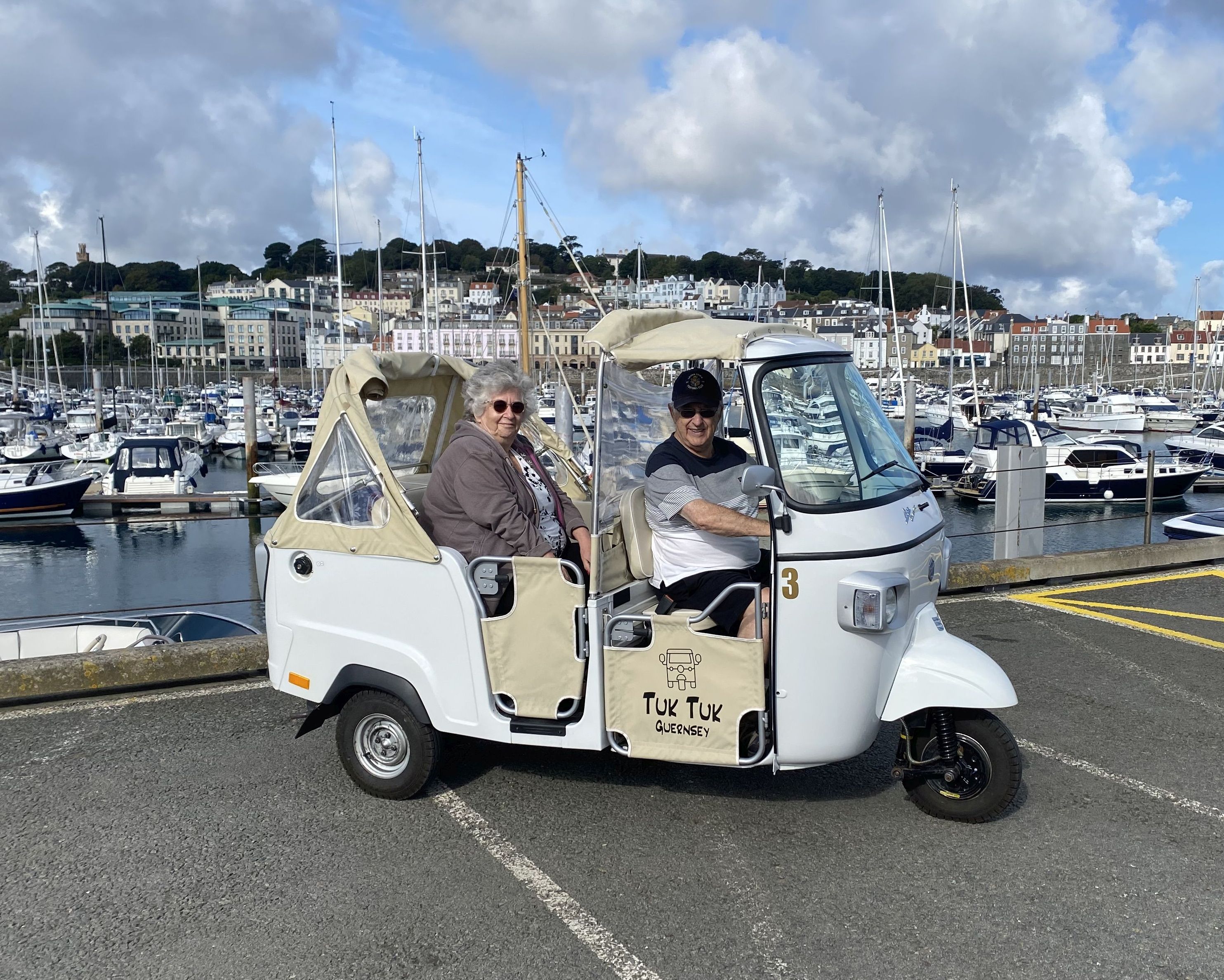 Guernsey is not unique in the world of cruising. There are many other tender ports that have more ship visits, but Guernsey is one of the best organised with a welcome for all by the local Tourist Board. The smaller islands of Herm and Sark can be reached too. In a good year there are as many as 80 cruise ship visits including the mega liners. Similar arrangements at Jersey are much more limited.
Guernsey is not unique in the world of cruising. There are many other tender ports that have more ship visits, but Guernsey is one of the best organised with a welcome for all by the local Tourist Board. The smaller islands of Herm and Sark can be reached too. In a good year there are as many as 80 cruise ship visits including the mega liners. Similar arrangements at Jersey are much more limited.
Getting off the ship early, no queues, we made our way to the Tuk Tuk motorised rickshaw start point at the end of Albert Pier. Five two-seaters are available and there is no advance booking for the one-hour scenic tour around St Peter Port plus a visit to the secluded Fermain Bay and Jerbourg Point. You can book much longer trips if that is your wish, all with very knowledgeable local guides, born and bred on the island. Photo stops were included taking in the panoramic view of the town from Mignot Plateau.
Many years ago, in the days of British Air Ferries flights from Southend, I was a regular to Guernsey with family, our hostelry the then new St Pierre Park Hotel, with 194 bedrooms, still the island’s largest and finest resort.
Now owned by Handpicked Hotels the external renderings have not changed and the inside is as smart as it ever was. The lovely lake and gardens are now mature and the nine-hole golf course seemed busy. An outdoor hot tub has been added to the spa and the 18m indoor pool looked enticing on a hot day. The award-winning Victor Hugo Restaurant has newly re-opened with a tantalising menu that has a nod to the 1980s. We had lunch in the Terrace Bar.
www.handpickedhotels.co.uk
www.visitguernsey.com
Honfleur (but really Bayeux)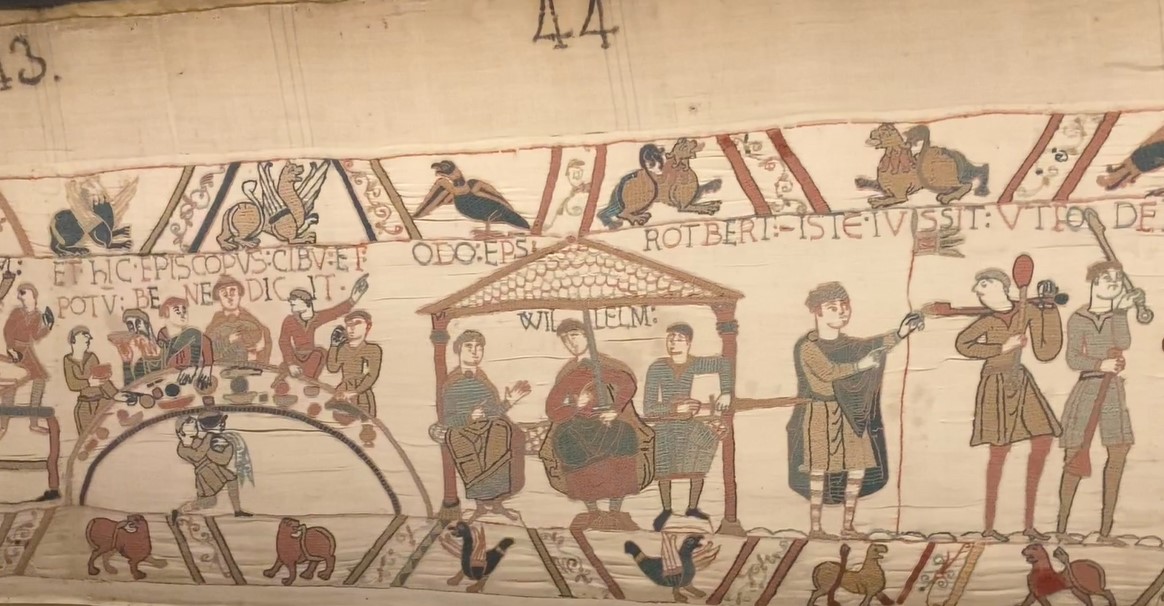 The picturesque fishing village of Honfleur at the tidal mouth of the Seine hosts both river and deep-sea cruise ships. It is not far from the 1944 Normandy battlefields, Caen; and Bayeux, famous for its tapestry and for a short time in 1944 capital of France before Paris was taken.
The picturesque fishing village of Honfleur at the tidal mouth of the Seine hosts both river and deep-sea cruise ships. It is not far from the 1944 Normandy battlefields, Caen; and Bayeux, famous for its tapestry and for a short time in 1944 capital of France before Paris was taken.
Bayeux itself is a charming small town with a water mill in the centre and still very French and catholic. Our visit was a Sunday with most shops closed.
The 11 September was poignant following the death of HM The Queen, our group arriving at the Norman gothic-style Notre-Dame Cathedral, dating from 1077, at noon to the chimes of the bells plus an unexpected rendition of ‘God Save the King’.
The Bishop of Bayeux was about to give a benediction to a crowded church. The British monarch is titled Duke of Normandy and the Queen visited Bayeux several times.
Housed inside an impressive 18th century building, is the famous and remarkable Queen Mathilda (wife of William the Conqueror) Tapestry an embroidery nearly 70m (230ft) long and 50cm (20in) in depth depicting the events leading to the Norman conquest of England in 1066.
With the help of an audio guide the 58 scenes are explained.
This fascinating work is thought to date to the 11th century, just a few years after the Battle of Hastings, most likely made in England and commissioned by Bishop Odo who was William’s half-brother.
The tapestry begins with a panel of Edward the Confessor sending Harald to Normandy. He was to fight with William. There are nude figures, some of corpses from battle, others of a ribald nature. The detail is amazing and the history is completed with King Harald with an arrow in his eye.
Beyond the framework of the story and its motivations, the Tapestry shows essential details on ships, châteaux, cavalrymen, arms, costumes and life-styles, which make it a “documentary film” of the 11th century.
The Bayeux Tapestry has had numerous lucky escapes, been rescued many times, and continues to reveal its secrets today. It could soon be seen in England for a short stay as there are plans to rebuild its current home in 2026".
www.bayeuxmuseum.com
www.honfleur-tourism.co.uk

OUR READERS' FINEST WORDS (All times and dates are GMT)
All comments are filtered to exclude any excesses but the Editor does not have to agree with what is being said. 100 words maximum
